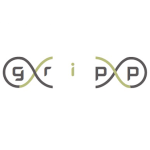
Public Artifacts and the Epistemology of Collective Material Testimony
Présentation de Quill Kukla (Kennedy Institute of Ethics Georgetown University), co-organisé par le Département de philosophie de l’Université McGill, et par la Chaire de recherche de recherche Katharine A. Pearson de Daniel Weinstock, Civil Society and Public Policy.
Public Artifacts and the Epistemology of Collective Material Testimony
Friday, October 21st, 2022, 3:30-5:30pm, Leacock 927, McGill University (Hybrid format)
Abstract
Many artifacts that are part of the public landscape—including monuments, memorials, murals, and many viewing towers, arches, gardens, public sculptures, and buildings— are designed to communicate knowledge. It is common to describe such public artifacts as speech, and also to describe them as transmitting knowledge of one sort or another. But the claim that these artifacts can be knowledge-transmitting speech is not typically developed as the complex claim in philosophy of language and social epistemology that it is. I will argue that such public artifacts can be testimony. This raises several philosophically important questions: How can public artifacts be speech, and more specifically, how can they testify? Whose testimony are they? To whom and about what are they testifying? And what is the epistemological status of this testimony—when should it be trusted? Surely if public artifacts can testify, then they can also mislead; it would be strange for them to be a form of testimony that is always trustworthy. Taking seriously their status as testimony means taking seriously as well the ways in which they can communicate false or unentitled claims. I am especially interested in public artifacts that at least appear to function as collective testimony, communicating collective knowledge.



